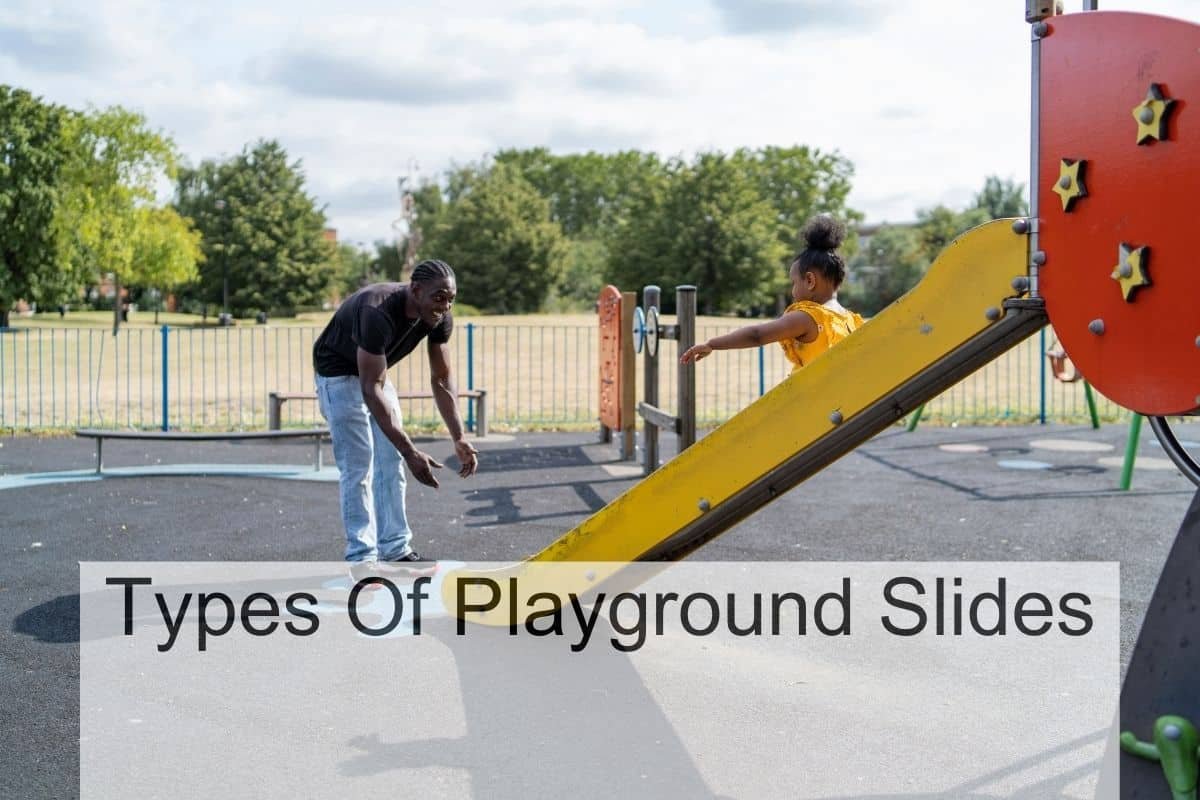As a playground enthusiast, I have always been fascinated by the different types of playground slides. Slides are one of the most popular playground equipment that children of all ages love to play on. They come in different shapes, sizes, and materials, and each type of slide has its own unique features and benefits.

One of the most common types of playground slides is the straight slide. As the name suggests, this slide is straight and has a simple design. It is usually made of metal or plastic and has a ladder or stairs that lead up to the top. Straight slides are great for younger children who are just learning to slide as they provide a gentle slope and a safe landing at the bottom.
Another popular type of slide is the spiral slide, which is designed to twist and turn as you slide down. Spiral slides are great for older children who are looking for a more thrilling ride. They come in different shapes and sizes and can be made of metal or plastic.
Types of Playground Slides

As a playground enthusiast, I have seen many different types of slides. Here are some of the most common types of playground slides that you might come across:
Straight Slides
Straight slides are the most basic type of slide. They are a simple, straight slope that leads from the top to the bottom. These slides are perfect for younger children who are just learning to slide. They are also great for parents who want to keep an eye on their children as they slide down.
Spiral Slides
Spiral slides are a fun and exciting type of slide. They have a twisty, corkscrew shape that adds an extra level of excitement to the ride. These slides are great for older children who are looking for a bit more of a thrill.
Tube Slides
Tube slides are a type of slide that is enclosed in a tube. They are great for children who like a bit of mystery and excitement. These slides can be straight or curved, and they can be either open or enclosed.
Wave Slides
Wave slides are a type of slide that has a wavy shape. These slides are great for children who want a bit more of a challenge. They are also good for parents who are looking for a slide that is a bit more exciting than a straight slide.
Freeform Slides
Freeform slides are a type of slide that has a unique shape. These slides can be curved, wavy, or even have multiple levels. They are great for children who are looking for a unique sliding experience.
Material Considerations

When it comes to playground slides, there are three main materials to consider: plastic, metal, and wood. Each material has its own benefits and drawbacks, and choosing the right one for your playground depends on a variety of factors.
Plastic Slides
Plastic slides are a popular choice for playgrounds because they are lightweight, easy to install, and come in a variety of colors and shapes. They are also relatively inexpensive compared to other materials. However, plastic slides are not as durable as metal or wood slides and may crack or fade over time. Additionally, they may not be suitable for very hot or cold climates, as extreme temperatures can cause the plastic to warp or become brittle.
Metal Slides
Metal slides are a classic choice for playgrounds because they are durable, weather-resistant, and can withstand heavy use. They come in a variety of materials, including stainless steel, hot-dip galvanized steel, and painted or anodized aluminum. Metal slides are also relatively easy to maintain and can be cleaned with soap and water. However, metal slides can become very hot in the sun and may not be suitable for very young children who may burn themselves on the hot surface.
Wooden Slides
Wooden slides are a great choice for playgrounds that have a natural or rustic theme. They are durable, weather-resistant, and can be customized to fit a variety of shapes and sizes. Wooden slides are also relatively easy to maintain and can be treated with a sealant to help prevent rot and decay. However, wooden slides may be more expensive than plastic or metal slides and may require more maintenance over time to keep them looking their best.
Safety Features

As a playground slide enthusiast, safety is always my top priority. Here are some of the essential safety features that every playground slide should have:
Safety Rails
Safety rails are a must-have feature for any playground slide. They provide a secure grip for children to hold onto as they climb up the ladder and slide down the slide. Safety rails should be sturdy and firmly attached to the slide to prevent accidents.
Non-Slip Surfaces
Slides can become slippery, especially when wet. To prevent accidents, slides should have non-slip surfaces that provide traction for children’s feet. Non-slip surfaces can be made of materials such as rubber, textured plastic, or even sandpaper.
Proper Slide Exit Design
The design of the slide exit is critical to ensuring children’s safety. The exit should be wide enough to accommodate children of all sizes and shapes. It should also have a smooth, rounded edge to prevent cuts and scrapes. Additionally, the exit should be high enough to prevent children from hitting the ground or other objects when they slide off.
Slide Installation

When it comes to installing a playground slide, there are two main types of installation: fixed structure slides and freestanding slides.
Fixed Structure Slides
Fixed structure slides are attached to a play structure, such as a swing set or playset. These slides are typically made of metal or plastic and come in a variety of sizes and shapes. They are a great option for those who want a permanent slide and have a play structure to attach it to.
When installing a fixed structure slide, it is important to follow the manufacturer’s instructions carefully. Make sure the slide is securely attached to the play structure and that all bolts and screws are tightened properly. It is also important to ensure that the slide is level and stable before allowing children to use it.
Freestanding Slides
Freestanding slides are not attached to a play structure and can be placed anywhere on a flat surface. These slides are often made of plastic and come in a variety of sizes and shapes. They are a great option for those who want a portable slide that can be moved around as needed.
When installing a freestanding slide, it is important to make sure that the surface it is placed on is level and stable. It is also important to follow the manufacturer’s instructions carefully and to ensure that all bolts and screws are tightened properly.
Accessibility and Inclusivity
As a playground designer, I believe that every child should have the opportunity to play and have fun, regardless of their abilities. That’s why it’s important to consider accessibility and inclusivity when designing playground slides.
Adaptive Slides
Adaptive slides are designed to accommodate children with physical disabilities. These slides have wider openings and lower inclines, allowing children to easily access and slide down them. Some adaptive slides also have raised sides or backrests to provide additional support and stability.
Transfer Platforms and Ramps
Transfer platforms and ramps are essential for children who use wheelchairs or other mobility devices. These platforms provide a level surface for children to transfer from their wheelchair to the slide, and ramps provide a gradual incline for children to access the platform. It’s important to ensure that the transfer platform and ramp are wide enough to accommodate the child’s mobility device and that they meet the requirements of the Americans with Disabilities Act (ADA).
Maintenance and Durability
As a playground slide owner, I understand that maintenance and durability are critical factors to consider when choosing a slide type. Regular inspections and proper maintenance are essential for preventing accidents and ensuring the longevity of the slide.
One essential aspect of slide maintenance is keeping the surface clean and free of debris. Dirt, leaves, and other debris can accumulate on the slide surface, making it slippery and unsafe for children to use. I recommend using a soft-bristled brush and mild soap to clean the slide surface regularly.
Another key factor to consider is the durability of the slide material. Stainless steel, for example, is a popular material for playground slides due to its durability and resistance to corrosion. Additionally, plastic slides are lightweight and easy to install, but they may not be as durable as metal slides.
It’s also important to inspect the slide regularly for signs of wear and tear, such as cracks or rust. Any damage should be repaired promptly to prevent further damage or injury.

